Bioinspired non-heme iron catalysts for challenging oxidative transformations: mechanistic studies and catalytic applications on selective alkane hydroxylation and alkene cis-dihydroxilation
dc.contributor
Universitat de Girona. Departament de Química
dc.contributor.author
Prat Casellas, Irene
dc.date.accessioned
2013-07-15T08:25:56Z
dc.date.available
2013-07-15T08:25:56Z
dc.date.issued
2013-06-14
dc.identifier.uri
http://hdl.handle.net/10803/117778
dc.description.abstract
The functionalization of hydrocarbons in a sustainable manner is one of the main challenges for chemists. Their abundance in nature as natural gas or crude oil makes them the most convenient chemical feedstock. The oxidation of hydrocarbons is one of the most interesting reactions, because the introduction of an oxygen atom introduces functionality in these molecules, increasing their value as reagents for further chemical transformation. However, these reactions are fundamentally difficult due to the low reactivity of alkyl C-H bonds. Current available methodologies involve highly reactive-oxidizing reagents, high temperatures and long-time reactions in order to overcome this lack of reactivity. These harsh conditions introduce drawbacks in terms of chemo- and regioselectivity, essential to produce synthetic valuable products. An important step forward is the development of one-step oxidation methodologies, allowing the oxidation of C-H and C=C with high regio- and stereoselectivity. Natural systems, such as iron enzymes, are capable of perform this chemistry with high selectivity and efficiency. Iron is the most abundant metallic element in the earth and is essential for live. In addition, this lack of toxicity makes it and attractive material to substitute more toxic and expensive metals currently used. One of the main objective of this thesis is design of iron complexes that mimics the structure and function of these natural enzymes with the aim of find new methodologies for the selective C-H and C=C bond oxidation using green conditions. Furthermore, the study of these compounds could give useful information about the oxidation mechanisms operating in oxygenase enzymes. The results obtained in this thesis clarify the mechanism by which the oxidation of the C-H bond with retention of stereochemistry takes place at a mononuclear non-heme iron site, and evidence the formation of a high valent iron (V) capable of perform the cis-dihydroxylation of alkenes. Furthermore, a new complex is described as an efficient and selective catalyst capable of performing this chemistry in a scale amenable for synthetic applications
eng
dc.description.abstract
La funcionalització d'hidrocarburs de manera sostenible i eficaç és un dels principals reptes per la química moderna, degut a que la seva abundància natural els fa una important matèria primera. L'oxidació d'hidrocarburs és una de les reaccions més interessants, ja que la introducció d’un àtom d’oxigen en l’estructura d’un hidrocarburs li confereix funcionalitat química, fa augmentar el seu valor i els converteix en reactius adients per subseqüents transformacions químiques. No obstant això, aquestes reaccions són difícils a causa de la inherent baixa reactivitat dels hidrocarburs. Les metodologies actualment disponibles impliquen la utilització d’espècies altament oxidants i tòxiques, altes temperatures i llargs temps de reacció per tal de superar aquesta manca de reactivitat. Aquestes condicions extremes eviten que la química es pugui dur a terme de manera selectiva, fet essencial per produir productes d’alt valor sintètic. Un avanç important és el desenvolupament de metodologies de reacció suaus que permetin l'oxidació d'enllaços C-H i C=C amb alta regio- i estereoselectivitat. Els sistemes naturals, com ara enzims de ferro, són capaços de realitzar aquesta química. El ferro és l’element metàl•lic més abundant a la terra i és clau per nombrosos processos vitals, a més la seva baixa toxicitat el fa un atractiu material per substituir els elements de segona i tercera seria de transició més cars i tòxics emprats actualment. Un dels principals objectius d’aquesta tesi és dissenyar catalitzadors de ferro que imiten l’estructura i la funció dels enzims naturals per tal de trobar una nova metodologia que permeti l'oxidació selectiva d'enllaços C-H i C=C utilitzant condicions suaus i mediambientalment més benignes que les metodologies tradicionals. A més, l’estudi d’aquests sistemes pot donar informació útil sobre el mecanisme d’oxidació del propi enzim. Els resultats obtinguts en aquesta tesi aclareixen el mecanisme pel qual es duu a terme la hidroxilació de l’enllaç C-H amb retenció de la estereoselectivitat en centres mononuclears de ferro, i evidencien la formació d’una espècie de ferro (V) d’alt estat d’oxidació capaç de catalitzar la cis-dihidroxilació d’alquens. A més a més, es descobreix un catalitzador eficient i selectiu capaç de dur a terme aquesta química en condicions d’escala preparativa
cat
dc.format.extent
247 p.
dc.format.mimetype
application/pdf
dc.language.iso
eng
dc.publisher
Universitat de Girona
dc.rights.license
ADVERTIMENT. L'accés als continguts d'aquesta tesi doctoral i la seva utilització ha de respectar els drets de la persona autora. Pot ser utilitzada per a consulta o estudi personal, així com en activitats o materials d'investigació i docència en els termes establerts a l'art. 32 del Text Refós de la Llei de Propietat Intel·lectual (RDL 1/1996). Per altres utilitzacions es requereix l'autorització prèvia i expressa de la persona autora. En qualsevol cas, en la utilització dels seus continguts caldrà indicar de forma clara el nom i cognoms de la persona autora i el títol de la tesi doctoral. No s'autoritza la seva reproducció o altres formes d'explotació efectuades amb finalitats de lucre ni la seva comunicació pública des d'un lloc aliè al servei TDX. Tampoc s'autoritza la presentació del seu contingut en una finestra o marc aliè a TDX (framing). Aquesta reserva de drets afecta tant als continguts de la tesi com als seus resums i índexs.
dc.source
TDX (Tesis Doctorals en Xarxa)
dc.subject
Iron catalysts
dc.subject
Catalitzadors de ferro
dc.subject
Catalizadores de hierro
dc.subject
C-H oxidation
dc.subject
Oxidació C-H
dc.subject
Oxidación C-H
dc.subject
Hidrogen peroxide
dc.subject
Peròxid d'hidrògen
dc.subject
Peróxido de hidrógeno
dc.subject
cis-dihydroxylation
dc.subject
cis-dihidroxilació
dc.subject
cis-dihidroxilación
dc.subject
Bioinspired catalysis
dc.subject
Catalitzadors bioinspirats
dc.subject
Catalizadores bioinspirados
dc.subject
Homogeneous catalysis
dc.subject
Catalitzadors homogenis
dc.subject
Catalizadores homogéneos
dc.title
Bioinspired non-heme iron catalysts for challenging oxidative transformations: mechanistic studies and catalytic applications on selective alkane hydroxylation and alkene cis-dihydroxilation
dc.type
info:eu-repo/semantics/doctoralThesis
dc.type
info:eu-repo/semantics/publishedVersion
dc.subject.udc
546
cat
dc.contributor.director
Costas Salgueiro, Miquel
dc.contributor.director
Ribas Salamaña, Xavi
dc.embargo.terms
cap
dc.rights.accessLevel
info:eu-repo/semantics/openAccess
dc.identifier.dl
Gi. 1056-2013
Este ítem aparece en la(s) siguiente(s) colección(ones)
Departament de Química [150]


